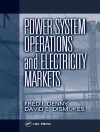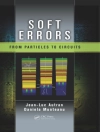EMERGENCY RESPONSE MANAGEMENT OF OFFSHORE
Examines the Deepwater Horizon disaster and offers processes for safety and environmental protection
Though renewable energy is a growing piece of the energy ‘pie, ‘ fossil fuels still dominate our energy supplies and will continue to do so for decades. This makes offshore drilling, especially in places like the Gulf of Mexico and North Sea, extremely important for the future of the world’s energy supply. Unfortunately, the world has been witnessing, over and over again, accidents, deadly explosions, spills, and environmental disasters that could have been avoided with proper safety and environmental processes put in place. The Deepwater Horizon catastrophe is the largest offshore oil spill in U.S. history and an ecological nightmare of epic proportions. Emergency Response Management of Offshore Oil Spills aids in the response of this and future disasters by providing this handy reference volume for engineers, managers, and other emergency responders.
This timely publication outlines the toxic nature of crude oil, covering properties of crude oil, chemical composition, toxicity to humans and marine life, and investigates the impact of oil spills from historical case studies. The current arsenals available to address oil spills, such as dispersants, absorbing booms, skimming, and other methods, are also discussed. Technologies that are rapidly being developed to address the Gulf Oil Spill are considered, along with extensive information on chemical protective clothing, air monitoring, respiratory protection, management of waste, and much more. The book concludes with a chapter discussing responsible care and takes a critical look at the reasons why the Deepwater Horizon rig catastrophe happened and examines the follow-up that ensued after the incident.
Emergency Response Management of Offshore Oil Spills provides:
* Examples of 26 major oil spills ranked from largest to smallest, describing each incident and the amount of oil spilled
Recommendations and guidance on proper air monitoring methods
* Suggestions related to protective garments such as respirators
* Comparative product information on chemical dispersants, shoreline bleaching and cleaning chemicals
* Detailed toxicity data for humans and marine life
* Discussions in the areas of deficiencies in responding to spills and why the oil industry needs to be more responsive to developing technologies
* Hazardous materials protocols, including OSHA- and EPA- recommended safe work practices for dealing with hazardous materials
สารบัญ
Preface ix
1. Toxic Nature of Crude Oil 1
1.1 High Risk Areas 1
1.2 Potential Impacts 7
1.3 Definitions 8
1.4 Examples of Historical Oil Spills and Their Impacts 10
2. Origins of Spills 37
2.1 Offshore Drilling 37
2.2 Case Study 44
3. Use of Chemical Dispersants 55
3.1 Dispersants 55
3.2 Methods of Applicaion 60
3.3 Types of Dispensants and Commerical Products 62
4. Combating Spills at the Shoreline 93
4.1 Chemical Warfare 93
4.2 Booms and Barriers 157
5. Emerging Technologies 237
5.1 Clean World Innovations and Encap Sol 237
5.2 Centrifuges 243
5.3 Skimmers and Response Vessels 244
6. Spill Response and Worker Protection 247
6.1 Countermeasure Options 247
6.2 Spill Response Protocols and Strategies 271
6.3 Worker Protection 336
6.4 The Oil Spill Response Plan 420
6.5 Air Monitoring 429
7. Standard of Care and The BP Oil Spill 443
7.1 The Impacts 443
7.2 The Waxman/Stupak Letter 449
7.3 Standard of Care 462
Index 509
About the Authors 531
เกี่ยวกับผู้แต่ง
Nicholas P. Cheremisinoff is a consultant to industry and governments on standard of care as it pertains to environmental management and worker protection. He has more than 35 years of international consulting, business, and applied research and development experiences, having worked throughout Eastern Europe, Russia, parts of the Middle East, Latin America, the Far East, Africa, and the U.S. He has led and participated in hundreds of pollution prevention and environmental health and safety audits of large industrial complexes including refineries, coke-chemical plants, pulp and paper mills, steel mills, pharmaceutical and pesticide manufacturing plants, wood treating facilities, and other industrial operations. He has led and assisted several foreign governments in strengthening environmental laws and trained several thousand regulators and industry personnel on environmental auditing, pollution prevention and safe chemical management through programs sponsored by the U.S. Agency for International Development, European Union, and World Bank Organization. He is the author, co-author or editor of more than 150 technical books. Dr. Cheremisinoff earned his Ph.D., M.Sc. and B.Sc. in chemical engineering from Clarkson College of Technology.
Anton Davletshin is Senior Project Manager for N&P, Ltd, a firm specializing in standard of care assessments. Anton manages sampling programs, conducts historical literature reviews and assists in environmental impact assessments that aid N&P staff in forensic reconstruction of legacy pollution problems. His expertise extends to applications of air dispersion simulations using EPA-approved Aer Mod used in the evaluation of community impacts from point and area sources of emissions from within industrial complexes. A graduate of Virginia Polytechnic Institute, he holds a degree in Construction Management.












